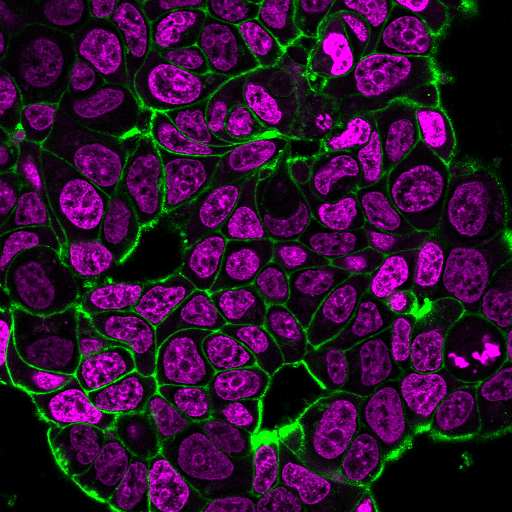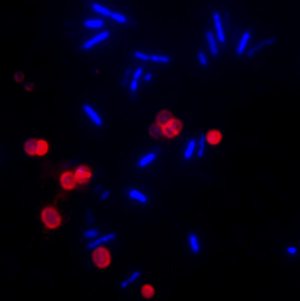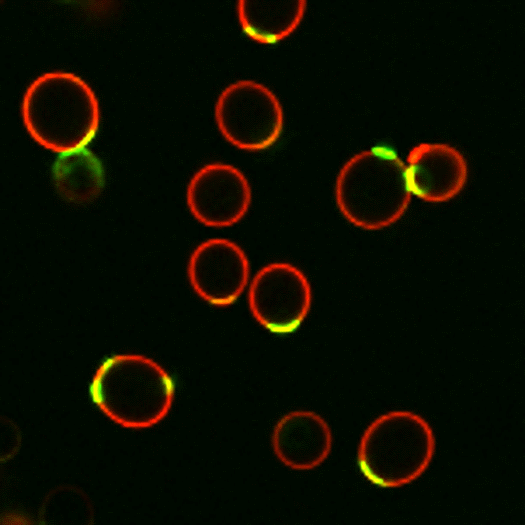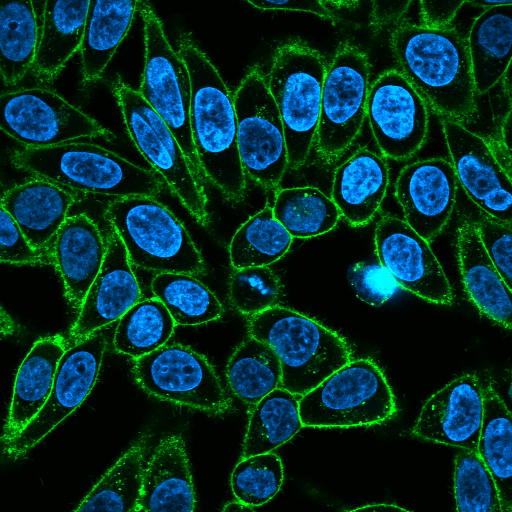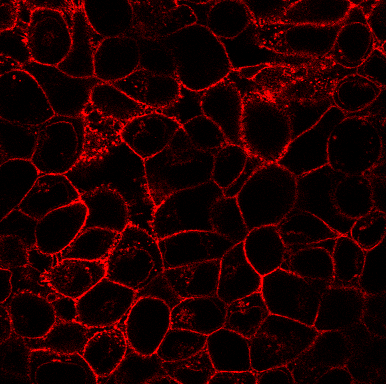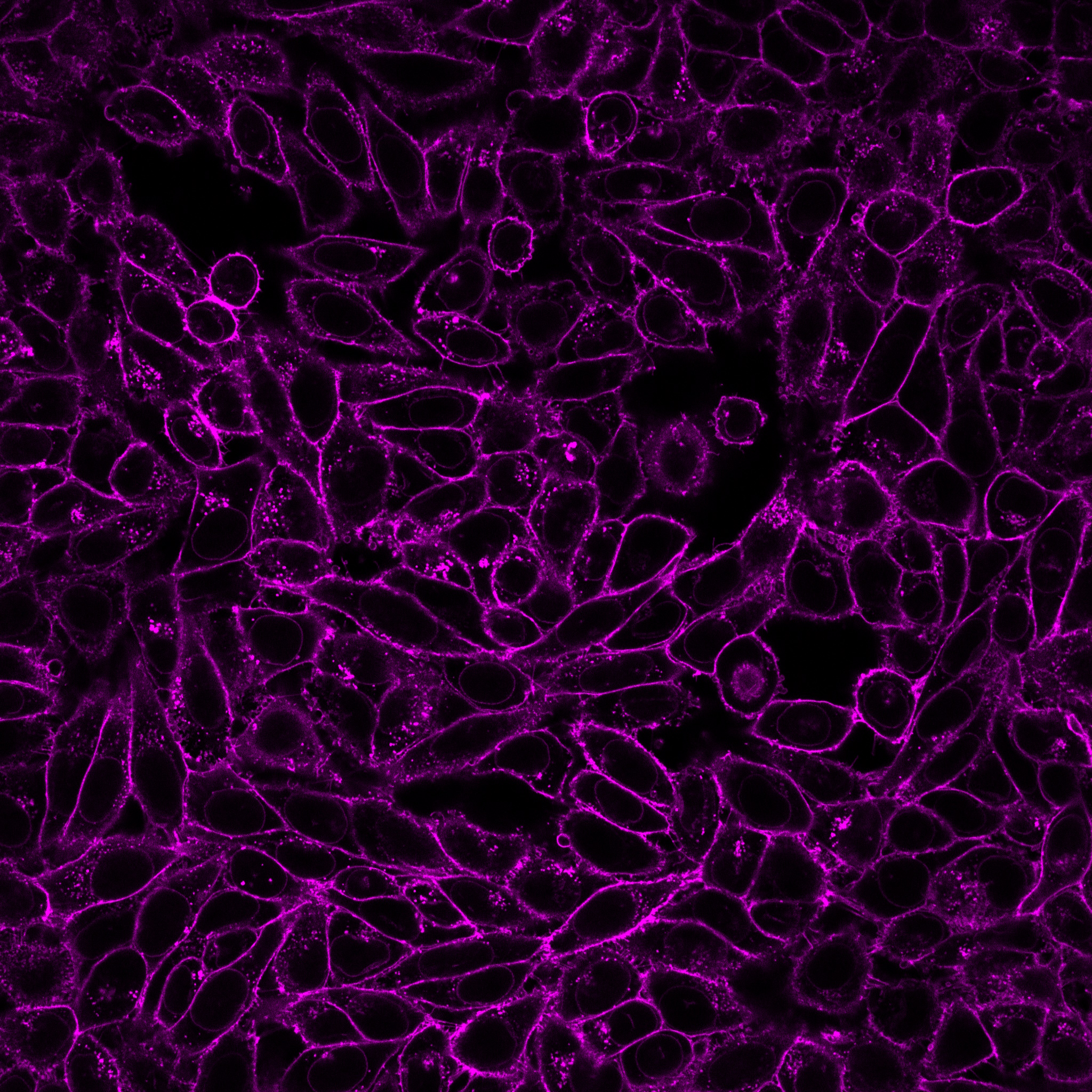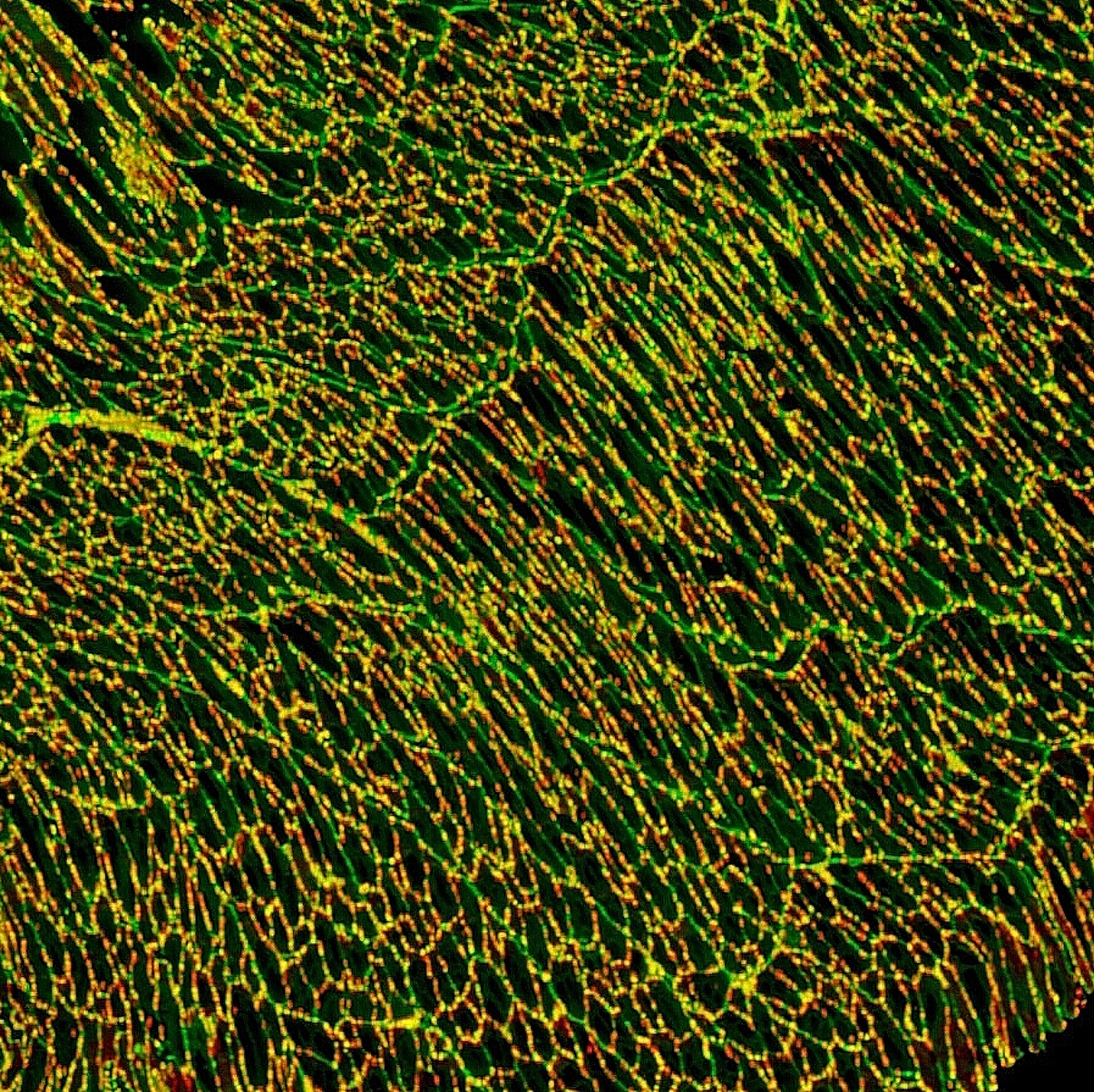Wheat Germ Agglutinin (WGA) Conjugates
A wheat germ agglutinin (WGA) lectin labeled with Biotium’s CF® Dyes, biotin, or HRP. It is a carbohydrate-binding lectin that has high affinity for sialic acid and N-acetylglucosamine and stains yeast bud scars as well as the cell membrane of gram+ bacteria and mammalian cells.
Please fill in the inquiry form and we will contact you shortly.
Wishlist updated! View wishlist
Product Description
Wheat germ agglutinin (WGA) is a carbohydrate-binding lectin that has high affinity for sialic acid and N-acetylglucosamine moieties of glycoproteins. As a result, WGA conjugates will label yeast bud scars and the cell membrane of gram bacteria and mammalian cells.
- Stain yeast bud scars as well as the cell membrane of gram bacteria and mammalian cells or tissues
- Suitable for Western Blot, ELISA, immunohistochemistry and other standard immunoassay applications
- A retrograde or anterograde neuronal tracer
- Withstands fixation and permeabilization
- Choice of 14 CF® Dyes from UV to near-infrared, biotin, or HRP
- Superior CF® Dyes are bright, photostable, and water-soluble
WGA is commonly used to label glycoproteins for imaging of the plasma membrane in live or fixed cells, for staining of tissue sections, or for western blotting. WGA can be used as a gram stain to fluorescently label gram bacteria but not gram- bacteria. WGA also binds to the bud scars on budding yeast such as Saccharomyces cerevisiae.
Find the Right Stain for Your Application
WGA and other lectins are carbohydrate binding proteins that recognize specific sugar moieties on glycoproteins. The presence and distribution of these targets vary between cell types and tissues. As a result, other cell surface stains or other lectin conjugates, Concanavalin A (Con A) Conjugates and PNA Lectin Conjugates, may produce better surface staining and may be more appropriate for your cell type. Lectin conjugates can be used to selectively stain the cell surface of live cells, and withstand fixation and permeabilization. When cells are fixed and permeabilized before staining, fluorescent lectins stain both cell surface and organelles in the secretory pathway. Lectins may be toxic or stimulatory to live cells depending on cell type. To find the right stain for your application, see our Membrane & Cell Surface Stains Comparison. See our Cellular Stains Table for more information on how our dyes stain various organisms.
Superior CF® Dyes
Biotium’s next-generation CF® Dyes were designed to be highly water-soluble with advantages in brightness and photostability compared to Alexa Fluor®, DyLight®, and other fluorescent dyes. Learn more about CF® Dyes.
Note: Conjugates of blue-fluorescent dyes like CF®350, CF®405S and CF®405M are not recommended for detecting low abundance targets and may be challenging to use in tissue specimens. Blue dyes have lower fluorescence and photostability, and cells and tissue have high autofluorescence in blue wavelengths, resulting in lower signal to noise compared to other colors.
Wheat Germ Agglutinin Conjugates
| Product | Conjugation | Ex/Em | Size | Catalog No. | Purchase |
|---|---|---|---|---|---|
| CF®350 WGA | CF®350 | 347/448 nm | 1 mg | 29021-1 | Purchase 29021-1 |
| 5 mg | 29021 | Purchase 29021 | |||
| CF®405S WGA | CF®405S | 404/431 nm | 1 mg | 29027-1 | Purchase 29027-1 |
| 5 mg | 29027 | Purchase 29027 | |||
| CF®405M WGA | CF®405M | 408/452 nm | 1 mg | 29028-1 | Purchase 29028-1 |
| 5 mg | 29028 | Purchase 29028 | |||
| CF®488A WGA | CF®488A | 490/515 nm | 1 mg | 29022-1 | Purchase 29022-1 |
| 5 mg | 29022 | Purchase 29022 | |||
| CF®532 WGA | CF®532 | 527/558 nm | 1 mg | 29064-1 | Purchase 29064-1 |
| 5 mg | 29064 | Purchase 29064 | |||
| CF®555 WGA | CF®555 | 555/565 nm | 5 mg | 29076 | Purchase 29076 |
| 1 mg | 29076-1 | Purchase 29076-1 | |||
| CF®568 WGA | CF®568 | 562/583 nm | 5 mg | 29077 | Purchase 29077 |
| 1 mg | 29077-1 | Purchase 29077-1 | |||
| CF®594 WGA | CF®594 | 593/614 nm | 1 mg | 29023-1 | Purchase 29023-1 |
| 5 mg | 29023 | Purchase 29023 | |||
| CF®633 WGA | CF®633 | 630/650 nm | 1 mg | 29024-1 | Purchase 29024-1 |
| 5 mg | 29024 | Purchase 29024 | |||
| CF®640R WGA | CF®640R | 642/662 nm | 1 mg | 29026-1 | Purchase 29026-1 |
| 5 mg | 29026 | Purchase 29026 | |||
| CF®680 WGA | CF®680 | 681/698 nm | 1 mg | 29029-1 | Purchase 29029-1 |
| 5 mg | 29029 | Purchase 29029 | |||
| CF®680R WGA | CF®680R | 680/701 nm | 1 mg | 29025-1 | Purchase 29025-1 |
| 5 mg | 29025 | Purchase 29025 | |||
| CF®740 WGA | CF®740 | 742/767 nm | 1 mg | 29128-1 | Purchase 29128-1 |
| 5 mg | 29128 | Purchase 29128 | |||
| CF®770 WGA | CF®770 | 770/797 nm | 1 mg | 29059-1 | Purchase 29059-1 |
| 5 mg | 29059 | Purchase 29059 | |||
| Biotin WGA | Biotin | N/A | 1 mg | 29095-1 | Purchase 29095-1 |
| 5 mg | 29095 | Purchase 29095 | |||
| HRP WGA | HRP | N/A | 1 mg | 29073 | Purchase 29073 |
Full List of Lectin Conjugates
| Product | Features |
|---|---|
| CF® Dye Concanavalin A (Con A) | • Cell surface stain for yeast, fungi, and mammalian cells • Selectively binds to a-mannopyranosyl and a-glucopyranosy residues • Available with a wide selection of CF® Dyes |
| CF® Dye Wheat Germ Agglutinin (WGA) | • Cell surface stain for mammalian cells and gram+ bacteria • Also stains yeast bud scars • Has high affinity for sialic acid and N-acetylglucosamine • Choose from a wide selection of CF® Dyes or HRP |
| CF® Dye Peanut Lectin (PNA) from Arachis hypogaea | • Specific for terminal β-galactose and binds preferentially to galactosyl (β-1,3) N-acetylgalactosamine • Choice of 4 CF® dye colors |
| CF® Dye Lycopersicon Esculentum (Tomato) Lectin (LEL, TL) | • Marker for blood vessels and microglial cells • Binds to [GlcNAc] 1,3-N-acetylglucosamine, glycophorin, and Tamm-Horsfall glycoprotein • Used to study tumor angiogenesis or tracing neovascular development in xenograft models • Choice of 5 CF® Dyes or biotin |
| CF® Dye Ulex Europaeus Agglutinin I (UEA I) | • Marker for human endothelial cells and incompletely differentiated gastrin cells • Binds to glycoproteins and glycolipids containing α-linked fucose residues • Choice of 5 CF® Dyes or biotin |
| CF® Dye Phaseolus Vulgaris Leucoagglutinin (PHA-L) | • Used to stimulate lymphocyte and T cell proliferation • Choice of 5 CF® Dyes or biotin |
| CF® Dye Datura Stramonium Lectin (DSL) | • Binds to (beta-1,4) linked N-acetylglucosamine oligomers • Choice of 5 CF® Dyes or biotin |
| CF® Dye Sambucus Nigra Lectin (SNA, EBL)) | • Binds to sialic acid attached to terminal galactose • Choice of 6 CF® Dyes or biotin |
References
Download a list of curated CF® Dye references.

